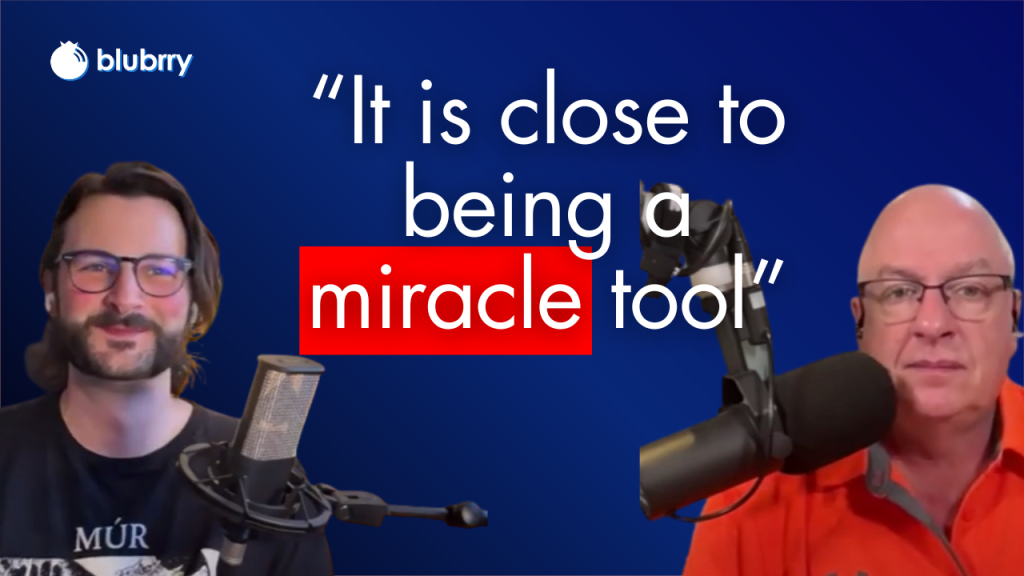 In a special edition of Podcast Insider, Blubrry CEO Todd Cochrane sat down with Christopher Grasser of Auphonic, the powerful audio post-production tool that many Blubrry customers rely on to master their podcast audio. What followed was a deep dive into how Auphonic works, why it matters, and what it means for podcasters, from seasoned professionals to beginners recording in their closets.
In a special edition of Podcast Insider, Blubrry CEO Todd Cochrane sat down with Christopher Grasser of Auphonic, the powerful audio post-production tool that many Blubrry customers rely on to master their podcast audio. What followed was a deep dive into how Auphonic works, why it matters, and what it means for podcasters, from seasoned professionals to beginners recording in their closets.
Auphonic, now a staple in Blubrry’s media mastering integration, began over a decade ago with a simple idea: make professional-quality audio accessible to anyone.
Where it Began
“Our CEO Georg (Holzmann), was an avid podcast listener who noticed there were so many problems with podcast audio,” Christopher explained. “He thought, could there be a way to automate this process for people who aren’t audio engineers?”
That vision became Auphonic — a tool that automates the most tedious aspects of audio production, such as leveling, noise reduction, and normalization. “We aim to be a toolbox for speech audio. If you drop in a file and have a problem, we’ll try to fix it—automatically.”
Todd, who’s been podcasting since the early days, recalls how painful the audio editing process used to be.
“You had to be a rocket scientist to do leveling in Audition or Audacity,” he said. “When I first tried Auphonic, I was like, ‘Bada bing, bada boom!’ The audio came back, and no more complaints from listeners.”
That ease of use is intentional. “We pre-set the most important settings because if we gave podcasters a giant menu, they’d say, ‘I don’t know what to do with this,’” Christopher said with a laugh.
 The heart of Auphonic lies in its intelligent automation. Once a WAV or MP3 file is uploaded, the software analyzes the file, classifying what is speech, what is music, and what is noise, and then processes it based on the selected preferences.
The heart of Auphonic lies in its intelligent automation. Once a WAV or MP3 file is uploaded, the software analyzes the file, classifying what is speech, what is music, and what is noise, and then processes it based on the selected preferences.
“We normalize, level, de-noise, de-reverb, and even offer transcription and silence cutting,” said Christopher. “And we’re always improving.”
Behind the scenes, Auphonic is powered by proprietary AI models, many of which are trained by audio engineers and data scientists. “We have training servers running 24/7,” Christopher said. “We’re constantly refining our algorithms using feedback from real-world audio.”
A Wide Range of Uses
That real-world usage includes everything from indie podcasters to broadcasters and audiobook creators. But Christopher is clear about one thing: “We specialize in speech, not music mastering. If you’re producing a meditation podcast or an interview show, we’re your people.”
One of the more impressive capabilities Auphonic has developed is dynamic noise reduction — perfect for podcasters who don’t record in acoustically-treated studios. “The difference between a $400 mic setup and a USB mic plugged into a laptop doesn’t matter as much anymore,” Todd noted. “Auphonic evens it out so well, even I can’t always tell the difference.”
But what about the finer controls, such as trimming filler words or silence? Auphonic now includes optional features for those, too. “We offer customizable de-breathing, filler word detection, and silence removal,” Christopher explained. “It’s all about giving people the choice while keeping output consistent.”
For those who want more granular control, an upcoming editor will allow users to adjust cuts manually and reprocess audio with personalized tweaks. “AI gets you 80% of the way,” Christopher said. “We want to offer the last 20% for those who need it.”
Todd summed up what many podcasters are likely feeling: “I just want a mastered audio file I can publish—without my audience riding the volume knob.” With Auphonic, that’s exactly what they get.
Whether you’re using Auphonic via Blubrry’s media mastering feature or directly through their site, one thing is clear: professional-sounding audio is now within every podcaster’s reach.





